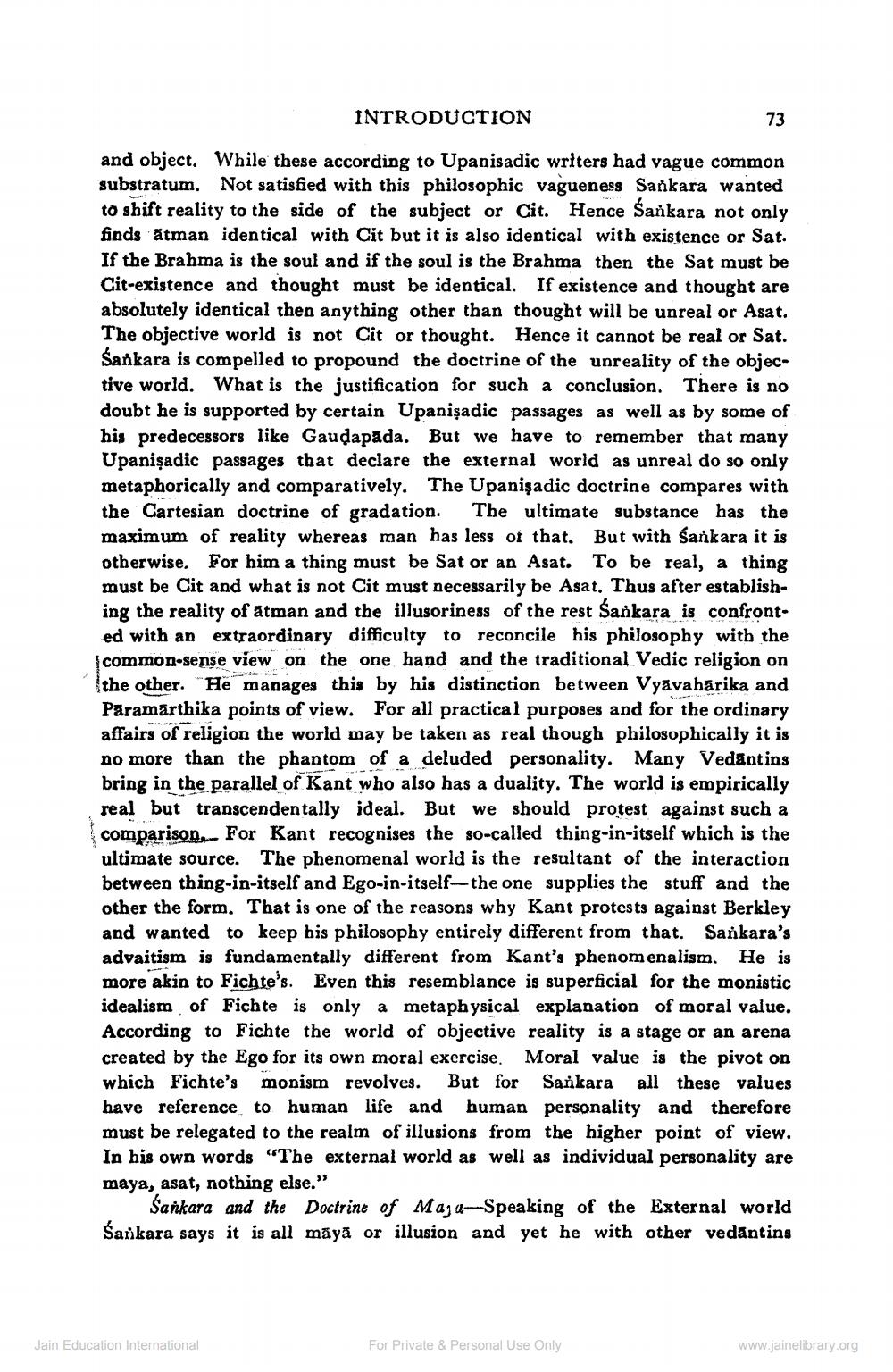________________
INTRODUCTION
73
and object. While these according to Upanisadic writers had vague common substratum. Not satisfied with this philosophic vagueness Sankara wanted to shift reality to the side of the subject or Cit. Hence Sankara not only finds atman identical with Cit but it is also identical with existence or Sat. If the Brahma is the soul and if the soul is the Brahma then the Sat must be Cit-existence and thought must be identical. If existence and thought are absolutely identical then anything other than thought will be unreal or Asat. The objective world is not cit or thought. Hence it cannot be real or Sat. Sankara is compelled to propound the doctrine of the unreality of the objective world. What is the justification for such a conclusion. There is no doubt he is supported by certain Upanişadic passages as well as by some of his predecessors like Gaudapada. But we have to remember that many Upanişadic passages that declare the external world as unreal do so only metaphorically and comparatively. The Upanişadic doctrine compares with the Cartesian doctrine of gradation. The ultimate substance has the maximum of reality whereas man has less of that. But with śankara it is otherwise. For him a thing must be Sat or an Asat. To be real, a thing must be Cit and what is not Cit must necessarily be Asat. Thus after establishing the reality of atman and the illusoriness of the rest Sankara is confronted with an extraordinary difficulty to reconcile his philosophy with the {common-sense view on the one hand and the traditional Vedic religion on the other. He manages this by his distinction between Vyavaharika and Paramarthika points of view. For all practical purposes and for the ordinary affairs of religion the world may be taken as real though philosophically it is no more than the phantom of a deluded personality. Many Vedantins bring in the parallel of Kant who also has a duality. The world is empirically real but transcendentally ideal. But we should protest against such a comparison For Kant recognises the so-called thing-in-itself which is the ultimate source. The phenomenal world is the resultant of the interaction between thing-in-itself and Ego-in-itself-the one supplies the stuff and the other the form. That is one of the reasons why Kant protests against Berkley and wanted to keep his philosophy entirely different from that. Sankara's advaitism is fundamentally different from Kant's phenomenalism. He is more akin to Fichte's. Even this resemblance is superficial for the monistic idealism of Fichte is only a metaphysical explanation of moral value. According to Fichte the world of objective reality is a stage or an arena created by the Ego for its own moral exercise. Moral value is the pivot on which Fichte's monism revolves. But for Sankara all these values have reference to human life and human personality and therefore must be relegated to the realm of illusions from the higher point of view. In his own words "The external world as well as individual personality are maya, asat, nothing else."
Sankara and the Doctrine of Maya-Speaking of the External world Sankara says it is all māyā or illusion and yet he with other vedantins
Jain Education International
For Private & Personal Use Only
www.jainelibrary.org




